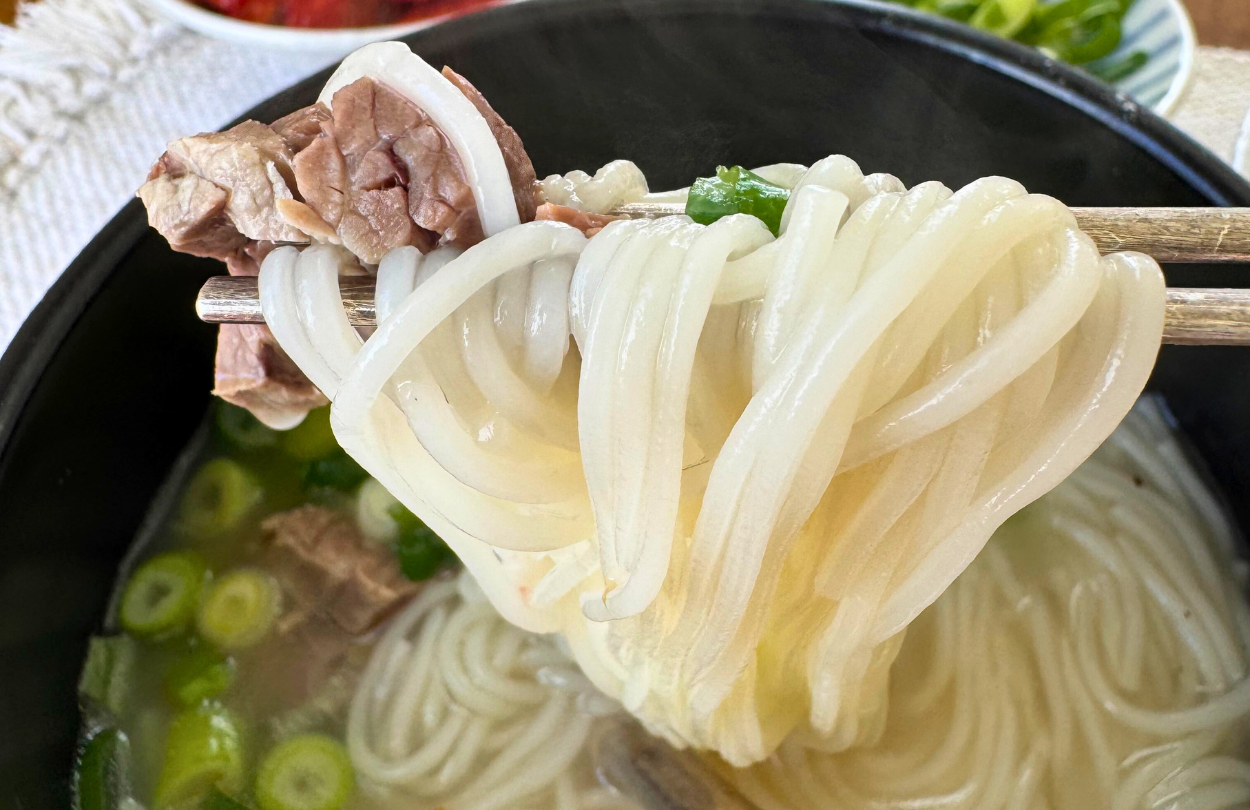Recipes / 24 Hour Ox Bone Soup (Seollongtang)
savory, korean, entree, soup, noodles, beef, meat
24 Hour Ox Bone Soup (Seollongtang)
Korean bone broth with scallions and brisket
Recently I’ve been thinking a lot about greed. Not the bad kind but a Korean word that I think I’ve misunderstood my whole entire life. Ever since I was young, my parents would make comments about how I had yokshim which coarsely translates to “greed” in English. I remember hearing these comments and feeling a little deflated but because of our language gap, I think I missed the real meaning of what they were trying to say.
What I didn’t realize then is that yokshim has a positive connotation as well that gets lost when translated into English. Too much yokshim suggests greed but a little bit of balanced yokshim means ambition, drive, dedication to achieve your goals.
And I think recipes like this Korean ox bone soup — recipes that aren’t hard but require commitment and dedication to the process — remind me of my younger self. Even the history of this dish — making good use of what you have like leftover bones, cooking them down on a medium boil for hours on end until all of the nutrients have seeped into the milky white broth — is about balanced yokshim. If the ancient Koreans didn’t have a little bit of yokshim or ambition, they probably wouldn’t have survived.
So here’s to ambition, determination, and appreciation of the process. I highly recommend eating this soup with the classic seollongtang fixins like noodles, scallions, and and perhaps a pinch of Korean red pepper flakes (gochugaru) but this broth is also fantastic with a pinch of salt as a warm beverage to sip on in these cold winter months.
24-Hour Ox Bone Soup (4 servings):
- 3.5 lbs beef marrow leg bones (aka 사골 “sagol”)
- 1 medium onion, peeled and halved
- 1/2 Korean radish (optional), peeled and halved
- 2 lbs brisket
- 4 servings Korean thin wheat noodles aka somyeon
- 3-4 bunches of scallions, thinly sliced
Step 1: Parboil. In a large bowl, soak the brisket in cold water to drain blood and set aside. In a large stock pot (the biggest one you have), soak the bones in cold water for 20 minutes to drain blood and wash away any impurities like fat and small bone particles. Drain and rinse the bones, place back in the pot and fill with water just until the bones are covered. Bring to a boil for 10 minutes as scum and impurities start to rise to the top. Remove bones (place on a tray), discard water, and clean the pot.
Step 2: Make broth. Add bones back to the pot, and fill the whole pot with fresh water (I used about 2.5 gallons in my biggest stock pot). Bring to a boil and then slightly reduce the heat to medium, maintaining a medium boil (with bubbles continually rising to the top).
Step 3: Boil. Add the brisket, onion and optional radish to the broth. After 1 hour, remove radish and after another 30 minutes, remove meat. Leave the onion in the broth. When cool enough to handle, slice the brisket the grain and store both the meat and the radish in the fridge until it’s time to eat. Continue to cook the bones on a medium boil for 4-5 hours.
Step 4: Top off. Add more water once or twice throughout the simmering process to keep the pot full. When done, broth will become a milky white, slightly opaque color.
Step 5: Chill. When the broth is ready, remove the bones and set aside on a tray. Strain the broth into another large pot to remove any bone fragments, onion pieces, etc. Chill the broth (in the fridge or outside if it’s cold enough) until the fat rises to the top and solidifies. Remove fat and save for cooking, if desired.
Step 6: Do it again. Refill the stock pot with cold water and the bones. The broth is even milkier the second time around! Repeat steps above and store the final broth in freezer-safe containers. I did this and was able to make 10 quarts of broth (about 8 servings) 😊!
Step 7: Enjoy. When you’re ready to eat, add a bundle of Korean wheat noodles to a bowl along with several slices of brisket and heaping spoonful of scallions. Add piping hot broth and serve immediately with sea salt, black pepper, and Korean red pepper flakes at the table for each person to season their soup as they like.
My Other Recipes
Copyright © 2024 Fruit & Supper LLC. All rights reserved.






